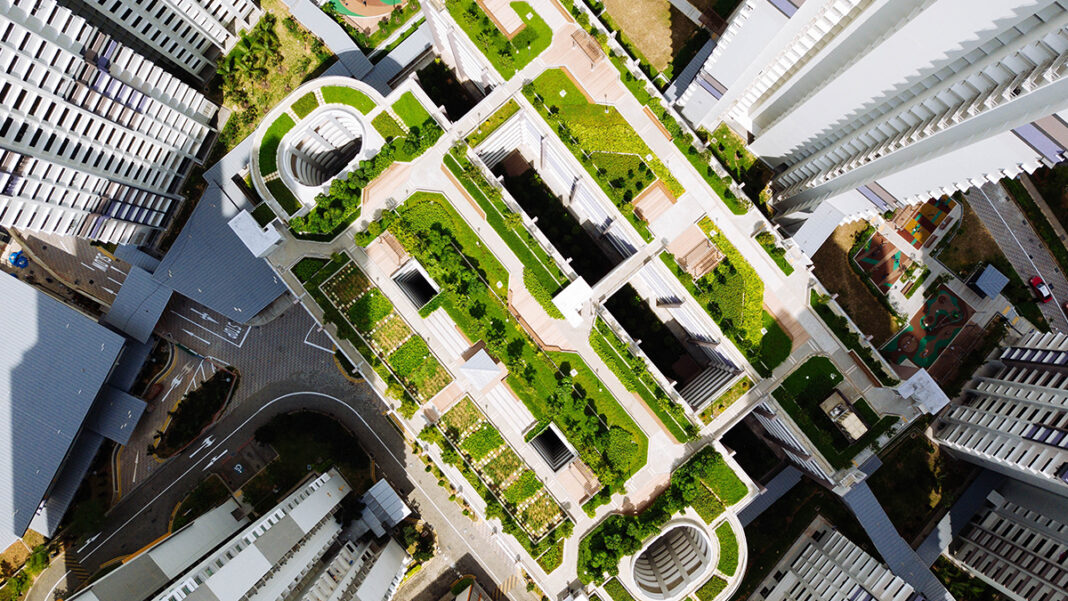Green roofs on buildings are another innovation of green technology that aims to increase sustainability and biodiversity. It is known as the vegetated roofs or eco-roofs. One of the problems in the world nowadays is the increasing population of buildings that replaces green areas. With this, the problem of pollution is worsening. Green roofs are a perfect way to make an urban place more attractive, clean, and productive.
As they say, it is like bringing back nature in the city. Nowadays, there are more companies that invest in green roofs because of their benefits. It can decrease energy consumption, greenhouse generation, reduce pollution, source of food, and it can even create habitats for urban wildlife. Know more about the efficiency of green roofs and the reason why not all establishments have it.
Why Do Green Roofs Not Seen On All Buildings?
With the advantages that green roofs offer, it seems like there are only a few who practice it. Based on research, installing green roofs on buildings have downsides that is why not all have the capability to have it. Achieving a green roof entails great skills and responsibility. It is not enough that you know how to plant but there are things that you need to consider to maximize its use. One must know how to landscape, install drainage paths, and do some health and safety requirements to build successful green roofs.
Some factors such as the space, location of the building, budget, and manpower are the major reasons why not all buildings don’t have green roofs. Another reason why only a few practices it is because of awareness. Not all are equipped with knowledge about the positive effects of green roofs so not all establishments have it.
Things to Consider On Green Roofing
Type of green roofing to be used
Green roofing has to types: intensive and extensive. The intensive roofing is when you create roofing like that of a garden or parks. You can use any plant in intensive roofing but it should be well-maintained. Extensive roofing requires less maintenance since it doesn’t require irrigation but it also has fewer benefits to the environment.
Waterproofing
If you have decided to opt for green roofing, you may ask your contractor to apply multiple layers of waterproofing to support vegetation. It is ideal to use a waterproof membrane such as the root barrier because it also acts as an irrigation system.
Location
Just like planting trees on the ground, you need to consider where the location is. If your building is located where it receives sufficient sun, it means that it is conducive for green roofing. The better the location, the more benefits it can give.
Type of plants
The choice of plants to be used is one of the important factors to consider. Make sure that the plants are native to your place to ensure that it will populate well into your climate. The type of plant should be suitable to your growing capabilities. Don’t choose plants that are hard to maintain if you are not yet a pro, you might kill the plants.
Budget
Building green roofs are costly. If you plan to have it in your building, you must let your contractor know about it to ensure that the building’s structure is safe. Installing growing medium, filter membrane, drainage layer, waterproof repellant layer, and structural roof support is necessary. These installations are costly aside from the payment for the labor.
Pros of Green Roofs on Buildings
Great at managing heat – When there is a green roof installed, the overall heat conducted by the buildings is reduced. If there is less heat, there will be a decreased need for the cooling system.
Management of storm water – When there is a green roof installed, storm water will not accumulate. The sewer systems will not suffer.
Environment-friendly – Green roofs on buildings prevent the distribution of dust and smog. If the plants on the roof flourish, it can catch pollutants on the air especially in urban areas.
Noise barrier – Green roofs serve as a natural noise barrier. Plants with soil can trap and absorbed sound waves even at higher frequencies making it an effective insulation barrier.
Increases job availability – If you have a large area on top of your building, you may need to hire some people to manage it creating additional jobs for other people.
Cons of Green Roofs on Buildings
High maintenance – Even though you use plants that require less maintenance, it is important to monitor it especially after significant weather events such as a storm. Regular inspection of the roof, checking the soil condition of each pot, removing debris, etc. should be done regularly. It requires so much time making it not suitable for those who can’t maintain it well.
May lead to costly repairs – If you opt for the intensive type of roofing, most of the plants to be used have large roots. If the roots start to grow on the main structure of the building, it may result in costly repairs if it will incur damage.
Weight of the green roof – The weight of the green roof may cause pressure to the structure of the building that may cause sagging.
Final Thoughts
The utilization of green roofs has environmental, economic, and societal benefits. In an urban area, green roofs on buildings absorb the negative environmental impact of pollution. It is not only applicable to buildings but it can also be practice at homes. So, if you have a space in your roof, go ahead and try planting beneficial plants to help the environment in your own little way.










